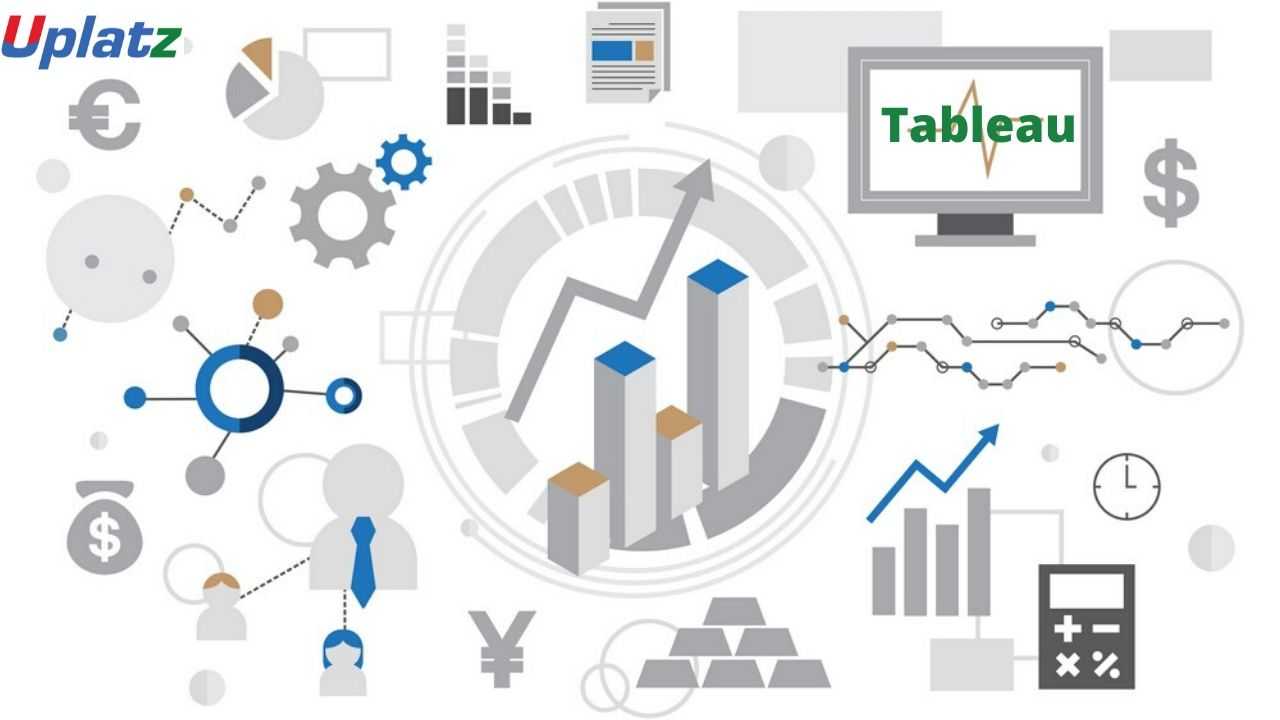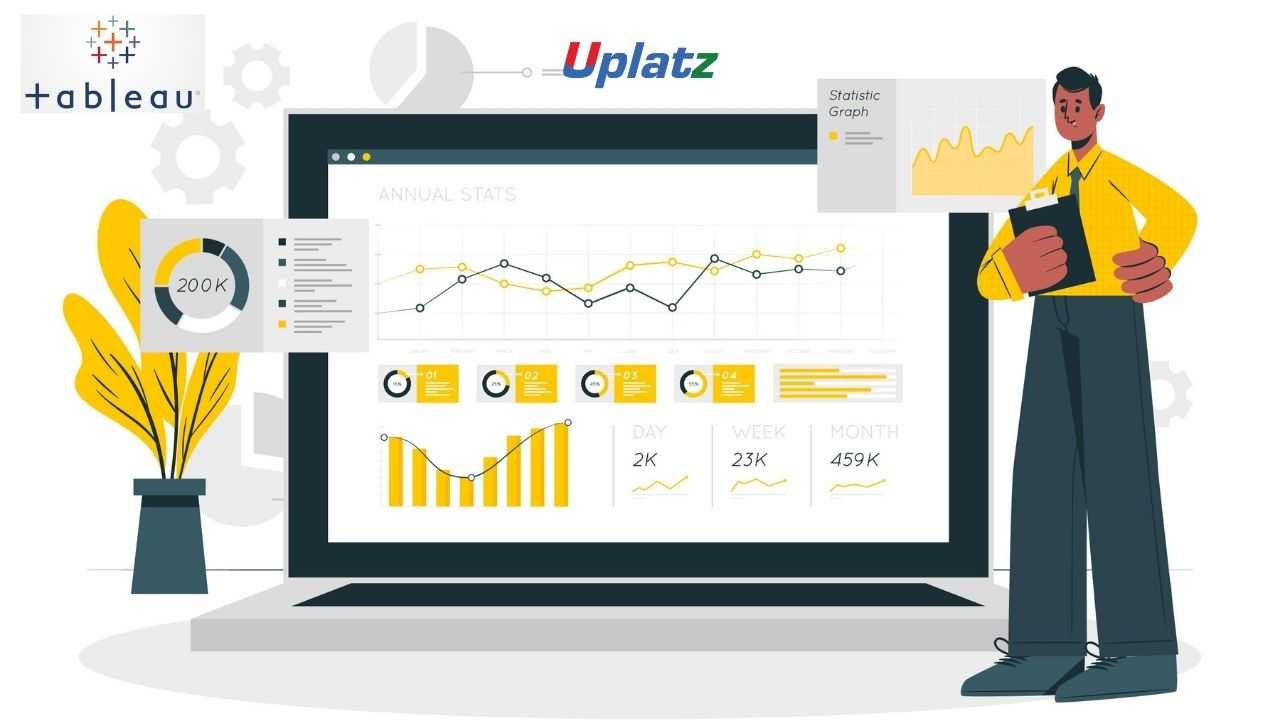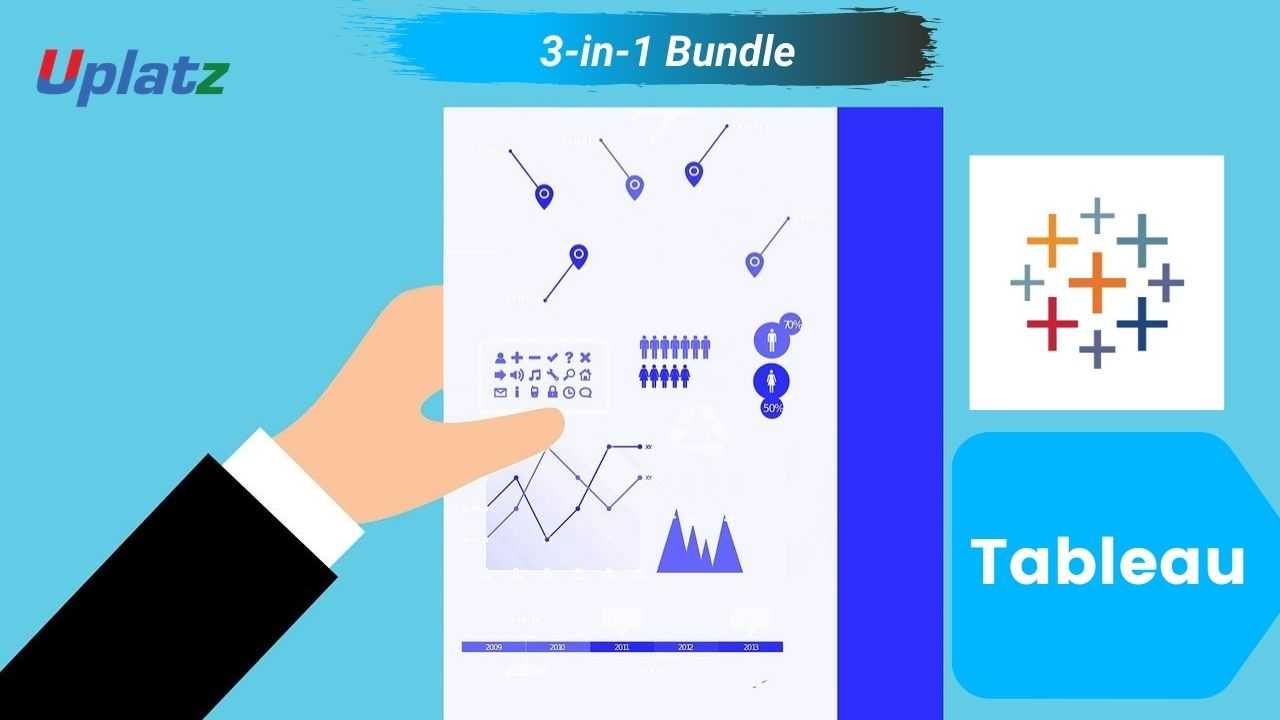Tableau
Learn features of Tableau & explore, experiment, fix, prepare customer purchase behavior, sales trends, or production bottlenecks.Preview Tableau course
View Course Curriculum Price Match Guarantee Full Lifetime Access Access on any Device Technical Support Secure Checkout Course Completion Certificate 80% Started a new career
BUY THIS COURSE (
80% Started a new career
BUY THIS COURSE (GBP 12 GBP 29 )-
 95% Got a pay increase and promotion
95% Got a pay increase and promotion
Students also bought -
-

- Tableau (basic to advanced)
- 20 Hours
- GBP 12
- 65 Learners
-

- Tableau (comprehensive)
- 20 Hours
- GBP 12
- 372 Learners
-

- Bundle Multi (3-in-1) - Tableau
- 45 Hours
- GBP 22
- 1344 Learners

Tableau is a visual investigation platform changing the manner in which we use information to tackle issues—enabling individuals and associations to capitalize on their information. As the leader in modern business intelligence, the Tableau platform is known to quickly and easily transform any type of data from nearly any system into active insights. It's as easy as dragging and dropping. In addition, our industry-leading global education, training and data community resources provide unmatched support for our customers and their analytics investments. Our mission is to help people see and understand data. We go beyond technology to ensure customer success by helping people build a data culture.
Tableau software is one of the fastest growing data visualization tools which is currently being used in the BI industry. It is the best way to change or transform the raw set of data into an easily understandable format with zero technical skills and coding knowledge.
Tableau is greatly used because data can be analyzed very quickly with it. Also, visualizations are generated as dashboards and worksheets. Tableau allows one to create dashboards that provide actionable insights and drives the business forward. Tableau products always operate in virtualized environments when they are configured with the proper underlying operating system and hardware. Tableau is used to explore data with limitless visual analytics.
Tableau connects to a lot of other native databases & servers. Tableau has a lot of analytics capability. It connects with most of the leading Big Data tools and is designed for end-users so that customers directly make changes as required.
With Uplatz Tableau Course you will learn-
Data Visualization.
Business Intelligence tools .
Introduction to Tableau .
Tableau Architecture .
Tableau Server Architecture.
VizQL .
Introduction to Tableau Prep.
Tableau Prep Builder User Interface.
Data Preparation techniques using Tableau Prep Builder tool.
Course/Topic - Tableau - all lectures
-
In this video lecture we learn basic about Tableau. Tableau is a business intelligent tool for visually analysing the data.
-
In this video we talk about Tableau Desktop Basics and also cover all the Basic topics of Tableau Desktop.
-
In this video we learn how to install Tableau business intelligent tool into your desktop and process of Tableau Desktop Installation.
-
In this video we about Tableau Desktop Workspace Navigation and cover all the importance of Tableau Desktop Workspace Navigation.
-
In this session we talk about Tableau Design Flow and also cover all the different types of Tableau Design Flows.
-
In this video we learn about Connections to Multiple Data Sources and cover all techniques of data sourcing.
-
In this video we talk about Hands-on - Tableau Data Connection and also cover different between live and exact Tableau Data Connection.
-
In this session we learn basic about Tableau Filters and different types of filters we can use in Tableau business tool.
-
Data can be organized and simplifies by using various techniques in Tableau. In this session we also cover types of filters and condition of filters in Tableau.
-
In this session we learn about Tableau Operators. Types of Tableau Operators and how to use these Tableau Operators.
-
In this video we talk about Bins - Groups - Sets – Parameters and also cover all the parameters we use in Tableau.
-
In this session we learn about Hands on - Tableau Sets and cover all different sets in Hands on - Tableau Sets..
-
In this session we talk about Basic Tableau Charts and learn about different types of charts.
-
In this video we talk about Hands on - Basic Tableau Charts how to make pie chart and importance of charts in Tableau business tool.
-
In this lecture we learn the Tableau Advanced Topics like Advance graphs, LODS and its usage and extensions etc.
-
In this video we talk about Tableau Extensions and cover all different types of extensions in a single video.
-
In this Lecture section we talk and overview the Tableau Dashboards and explore the Dashboards of Tableau.
-
In this lecture session we talk about the Tableau Story. In Tableau story is a sequence of visualization that work together to convey the information.
-
In this video we talk about Tableau LODs extension and importance of LODs extension in Tableau business tool.
-
In this lecture session we talk about Tableau Actions and also cover all Actions filters.
• Understand Tableau terminology. Use the Tableau interface/paradigm to effectively create powerful visualizations.
• Create basic calculations including basic arithmetic calculations, custom aggregations and ratios, date math, and quick table calculations. Build dashboards to share visualizations
• Apply the fundamentals of the tool
• Use all the basic functionality to visualize their data
• Connect to various data sources
• Build a variety of basic charts
• Combine insights into a useable dashboard
• Share and publish visualizations
• Create complex calculations and dynamic parameters
• Build a dashboard with powerful interactivity
• Produce complex chart types
• Apply advanced formatting and data visualization best practices
• Slice and dice your data to mine for critical insights
• You will be able to handle data retrieving, creation, organization and visualization and become an independent analyst in the role of a Tableau Prep Builder, Table Prep Conductor and so on.
The TableauCertification ensures you know planning, production and measurement techniques needed to stand out from the competition.
Tableau is a leading data visualization tool used for data analysis and business intelligence. Gartner's Magic Quadrant classified Tableau as a leader for analytics and business intelligence.
Tableau is a visual analytics engine that makes it easier to create interactive visual analytics in the form of dashboards. These dashboards make it easier for non-technical analysts and end users to convert data into understandable, interactive graphics.
Microsoft Excel is a spreadsheet application used for calculations, statistical operations, data analysis, and reporting. Tableau is a business intelligence and data visualization tool to get insights from data, find hidden trends, and make business decisions.
Uplatz online training guarantees the participants to successfully go through the Tableau Certification provided by Uplatz. Uplatz provides appropriate teaching and expertise training to equip the participants for implementing the learnt concepts in an organization.
Course Completion Certificate will be awarded by Uplatz upon successful completion of the Tableau online course.
The Tableau draws an average salary of $115,000 per year depending on their knowledge and hands-on experience.
The job is a perfect career in tableau if the individual has good team skills, problem-solving skills, managerial skills, and time management. The main job role of a Tableau developer is to prepare visualizations and presentations of the systems. They are also required to infer the data to enhance business excellence.
Tableau developers have a range of job titles to choose from – computer architect, business intelligence developer, business objects developer, data analyst, and microstrategy developer. Once you become a certified professional in Tableau from a reputable institute, your options are endless.
Note that salaries are generally higher at large companies rather than small ones. Your salary will also differ based on the market you work in.
Tableau Developer.
BI Developer.
Technical Developer.
Salesforce Developer.
1. What is TABLEAU?
Tableau is the powerful and fastest visualizing tool that is used in the Business Intelligence(BI) Industry. It simplifies the raw data into an understandable format. Analysis of the data becomes faster with Tableau. The visualizations can be created in the form of dashboards. The visualizations or diagrammatic representation of data can easily be understood by the employees of the organizations who are at different levels.
2. What is data visualization?
Data visualization means the graphical representation of data or information. We can use visual objects like graphs, charts, bars, and a lot more. Data visualization tools provide an accessible way to see and understand the data easily.
3. List out Tableau File Extensions.
The below ones are few extensions in Tableau:
- Tableau Workbook (.twb)
- Tableau Data extract (.tde)
- Tableau Datasource (.tds)
- Tableau Packaged Datasource (.tdsx)
- Tableau Bookmark (.tbm)
- Tableau Map Source (.tms)
- Tableau Packaged Workbook (.twbx) – zip file containing .twb and external files.
- Tableau Preferences (.tps)
4. What is the latest version of Tableau Desktop?
Tableau Desktop's latest version is 2021.3(as of, 7thSep 2021).
5. Define LOD Expression?
LOD Expression stands for Level of Detail Expression, and it is used to run complex queries involving many dimensions at the data sourcing level.
6. Define Heat Map?
A heat map is a graphical representation of data that uses the color-coding technique to represent different values of data. As the marks heat up due to their higher value, dark colors will be shown on the map.
7. Define TreeMap?
TreeMap is a visualization that organizes data hierarchically and shows them as a set of nested rectangles. The size and colors of rectangles are respective to the values of the data points they project. Parent rectangles will be tiled with their child elements.
8. What is the difference between a Heat map and Treemap?
TreeMap Heat MapIt represents the data hierarchically and shows them as a set of nested rectangles. It represents the data graphically which uses multiple colors to represent different values. It is used for comparing the categories with colors, size, and it can also be used for illustrating the hierarchical data and part to whole relationships. It is used for comparing the categories based on color and size. And also it is great in spotting the patterns based on the density of the information. The colors and size of rectangles are respective to the values of the data points When their values are higher or density of records, the data will represent in dark color.
9. What is a parameter Tableau? And how does it work?
Parameters are dynamic values, we can replace the constant values in calculations.
10. Give an overview of the fact and dimensions of the table?
Facts are numeric measures of data. They are stored in fact tables. Fact tables store that type of data that will be analyzed by dimension tables. Fact tables have foreign keys associating with dimension tables.
Dimensions are descriptive attributes of data. Those will be stored in the dimensions table. For example, customer’s information like name, number, and email will be stored in the dimension table.









